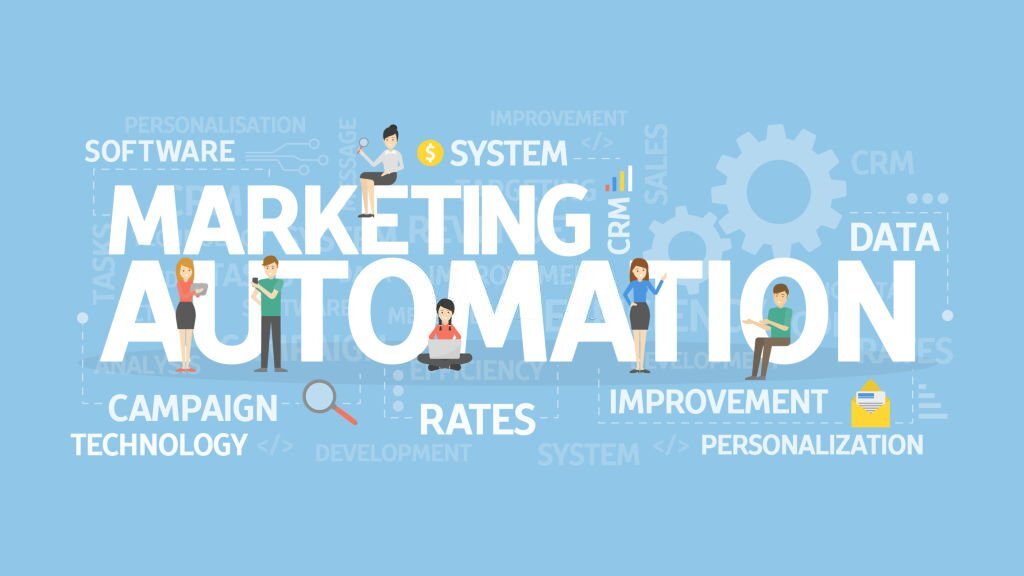Conversational marketing has become a hot trend in digital growth marketing in recent years. Ask anyone who has some involvement in digital growth marketing, and he or she will vouch for the effectiveness of conversational marketing. According to a report by drift, around 50% of companies using conversational marketing said that it helps them respond faster to their customers. According to the same report, more customers now expect brands to provide an immediate response. In this blog post, we shall discuss in detail the following points
- Benefits of conversational marketing
- Reasons to use conversational marketing in your business
- Steps to create a conversational marketing strategy
- Types of conversational marketing
- Examples of a conversational marketing strategy
- How we can help you in building an effective conversational marketing strategy
What is Conversational Marketing?
Let’s start with the conversational marketing definition: “It is a method of engaging with website and application visitors through dialogue-driven activities.”
In simple terms, conversational marketing is marketing that holds meaningful conversations with customers. There are many ways to do conversational marketing. A couple of them are listed below.
- Intelligent chatbots
- Voice assistants
You, as a marketer, can position conversational marketing experience on your social media channels, website or application, or even physical stores through connected devices like smart speakers. The beauty of conversational marketing is that it helps marketers make marketing more interactive.
You can use conversational marketing to transform your marketing funnel and derive a better ROI.
Benefits of Conversational Marketing
There are numerous benefits of conversational marketing in organic growth marketing. These benefits have attracted scores of marketers to conversational marketing. Let’s discuss a few important benefits of conversational marketing.

Better customer satisfaction
Conversational marketing is an effective tool for digital marketing for a small business. Around 54% of digital users prefer brands that engage with their customers. Conversational marketing can help you boost your user satisfaction levels by delivering a purposeful user experience. You can provide such a meaningful user experience at every digital touch point. In addition, intelligent chatbots can help you increase consumer engagement, confidence, and loyalty by helping users interact directly with your brand.
Deepen customer relationships
Deepening customer relationships is one of the major benefits of using digital marketing for business growth. According to a survey, 8 out of 10 customers believe that it is important for businesses to be trustworthy. However, around 4 out of 10 consumers say that they do not trust businesses to look out for the well-being of society. It takes time to build trust. You can listen to your customers’ needs and address their problems in real-time to build deep customer relationships. Businesses can’t deliver meaningful interactions at scale using human customer care executives. This is why natural language processing is important. Search your brand to create a sense of empathy with its users.
Build a robust business strategy
Conversational marketing helps your business gain a lot of information regarding your customers. You can use these insights to personalize your offering, optimize your product, better advertise specific product categories or build new products. Conversational marketing helps you quantify the impact of your marketing campaigns. It helps you to gain near real-time customer feedback. You can easily optimize your future business strategy using the data provided by conversational marketing.
Become a market leader in digital experience
Understand that conversational marketing is still in a nascent stage. Hence, if you choose to implement conversational marketing, you can easily establish yourself as one of the industry’s innovators. Conversational marketing also helps you to raise the bar of customer experience. Companies that can improve their users’ online buying experience through conversational marketing solutions will set benchmarks for others to follow.
Increased cross-sell and up-sell opportunities
Conversational marketing helps you to meaningfully interact with your users. With these meaningful interactions, you as a business can get to the root of your user’s needs. Furthermore, you can combine the information from these meaningful interactions with expert knowledge and AI analytics. This will help you identify up-selling and cross-selling opportunities and increase your ROI.
Available 24/7
24/7 availability can prove to be a major benefit for your business. Most users are busy with their lives during the typical 9 to 5 working hours. Most users prefer to contact a business at the weekend or later in the evening. It is frustrating for the users when your business says it is closed for the day. Conversational tools like intelligent chatbots allow your business to be available 24/7. This can boost your business significantly.
Shortens the sales cycle
Through conversational marketing, you can considerably shorten your sales cycle. Previously, you used lead capture forms and assigned a sales representative to reach out to the lead. This was a tedious and time-consuming process that often led to lost leads. Conversations enabled through intelligent chatbots are instant and help you respond in real-time. Intelligent chatbots can direct leads to the most suitable sales representative immediately. This helps boost the chances of sales conversion, ultimately boosting your ROI.
https://www.leveljump.io/blog/shorten-sales-cycles
Why Should You Yo for Conversational Marketing?
Companies that do not embrace conversational marketing risk falling behind their competition. Conversational marketing improves the customer experience multiple times. The following are some compelling reasons why you should go for conversational marketing.
1. The brand experience matters more now than ever
Modern-day consumers care about the experience provided by your brand. Apple is a nice example of a brand leveraging excellent user experience to its advantage. Apple consciously designed its Apple stores to mimic upscale boutiques. This was done to provide a unique customer experience to people visiting the Apple Store.
Conversational marketing can help you create a positive experience for your customers. For instance, intelligent chats can help your customers make better purchase decisions. Chatbots can even help address their questions.
2. Your competitors are already using conversational marketing
According to a survey, around 4 out of 10 people use conversational marketing while doing business with a brand. Around 70% of users use it to get quick responses to their queries. Live chat with intelligent chatbots is one of the most preferred ways users get in touch with organizations.
Today’s customers want their answers and issues to be resolved quickly. Conversational marketing allows you to address your clients in a personal way from the comfort of their own homes.
Your tech-savvy competitors might already know the value of conversational marketing. You may fall behind your competitors if you do not implement conversational marketing in your business.
Types of conversational marketing
The scope of conversational marketing is wide, and many types of conversational marketing tools are available today. Let’s have a look at the major conversational marketing types.
Live Chat
Live chat is the most well-known form of conversational marketing. According to a survey, 8 out of 10 consumers prefer live chat over other options like calling or email. This is because of the instantaneity and multitasking ability of live chat. However, live chat is labour-intensive as you have to hire human customer support executives for it. This proves too costly for many businesses.
Chatbots
Chatbots help you simulate personalized conversational scenarios of the live chat experience. This allows businesses to scale their live chat operations without losing the human touch. According to a survey, chatbots win against live chat in providing 24/7 support. The survey states that users view chatbots in a favourable light regarding providing 24/7 support. This is one of the greatest strengths of chatbots. There are two main types of chatbots.
- AI chatbot
- Rule-based chatbot
Chatbots started as simple programs designed to help human customer care executives with the most basic tasks.
Over the years, due to advancements in chatbot technology, chatbots were assigned more complex tasks like
- Handling complaints
- Processing financial transactions
- Customizing service offerings
- Finding products
- Data analysis
- Promotion and advertising
- Cross-selling and upselling
Voice Assistant
Voice assistants are those kinds of intelligent chatbots that rely on the spoken word instead of a visual interface.
Voice assistants have gained a lot of ground in terms of popularity. Voice assistants like Alexa Siri and Google assistant lead the pack and are ubiquitous today. Around 62% of US consumers use voice assistants to make shopping decisions. Voice assistants order coffee and pizza today and can even book flights for you. Big businesses like Starbucks and Domino’s have already started using voice assistants.
Many of you would be surprised as we have mentioned email as a form of conversational marketing. Of course, not all email marketing can be considered conversational marketing. However, there are certain instances where email marketing fits into conversational marketing.
Email drip campaigns can be considered conversational marketing. This is because you can create a personalized email drip sequence that feels like a conversation. You can even link an email to a bot or live chat to introduce conversational email marketing to your business.
Social Media
Similar to email marketing, not all forms of social media marketing can be considered conversational marketing. The conversational aspect of social media posts surfaces only when you create interactive posts. Understand that interaction has to be a two-way channel, and you must let your followers know that you are listening to their queries.
The following are the common examples of taking a conversational approach in social media marketing.
- Private messaging
- Live to stream
- Social media polls
- Social commenting
How to Create a Conversational Marketing Strategy?

You will need a robust conversational marketing strategy to gain more profit from your conversational marketing activities. There are many conversion marketing strategies that you can choose from. The important part is the implementation of your conversational marketing strategy. So how do you implement your conversational marketing strategy? Here are ten steps that can get you on the right track.
Step 1: Map Customer Journey
The first step is to map the journey of the customer. Mapping the customer journey is important because it will let you know at which step of the customer journey a particular conversation is likely to take place. To map the customer journey, you can consider the following questions.
- How will users consume this content?
- At what point will the conversion take place?
- How relevant is your content to the customer’s story?
Step 2: Identify the Most Effective Communication Channel
The second step is to identify the most effective channel of communication with your users. Identify a channel that will feel most natural to your potential customers. This is important to initiate instant conversations. For example, a web chatbot might be the best communication channel in case you are trying to capture users who are still in their research stage. A WhatsApp or a Facebook messenger bot can be a good communication channel if your buying process is long. These social media channels provide you with long-term access. Social media bots are also a great way to reactivate your followers.
Step 3: User Stories
A user story is a short and simple description of your product or surface which highlights its specific feature. The idea is to identify the pain points of your leads and show them how your product or service will solve their problem. User stories help you focus on the benefits from the user’s perspective. This way, you come across as a brand focused on the user’s issues and not hell-bent on selling their product or service.
Step 4: Ideate the Conversation
Ideating the conversation is the 4th step in this process. This exercise aims to make a somewhat structured map of the conversation. Through this exercise, you can build a more natural-sounding conversation. The idea is to build a conversation within the given context that is true to the user story.
Step 5: Conversation Path
Once your primary conversation structure is ready, it’s time to determine whether you can branch out your conversation. Sometimes it’s best to keep the conversation short and straightforward. However, you may require the user to dig deep in most situations.
Step 6: Identify Triggers
This is the sixth step in which you think about the trigger for every question/answer. By analyzing these triggers, you can also identify the kind of bot you need.
So what is the trigger for a particular question or answer?
Is it a keyword image phrase or a button? The answer usually depends on the following factors.
- Customer stage: Answers to the FAQs can be easily triggered by a keyword or a phrase from customer input. However, retrieving specific product information will prove easy to manage through a button or image instead of text.
- Degree of freedom in the dialogue: Open-ended questions can confuse your customers. Sometimes, you may want to control the conversation by letting your chatbots ask the questions. You can use response buttons as a trigger in such cases.
- Interface flexibility: If the chatbot is hosted on your website, you are free to design the UI as you wish. However, you won’t get such flexibility on certain third-party platforms. For instance, the WhatsApp UI relies completely on text.
- User behaviour: Your customer might face difficulties in correctly phrasing their needs in some cases. You might want to help them out in such cases. For example, you can offer them a conversational button menu as a trigger point.
Put some thought capital into what triggers work best for your bot and which ones to apply for different stages of the conversation.
Step 7: Identify Key Integrations
To build a highly successful conversational marketing setup, you will need access to databases like customer communication or purchase history, customer browsing history, and other necessary information. In addition, you will need a way to store and organize customer data to provide the necessary context to your chatbot.
Will you require integration with Google sheets, sales force, or a Mailchimp account? First, identify the various third-party integrations your chatbot will require to build a frictionless interaction. Then, choose a conversational marketing platform provider only once you know your needs.
Step 8: Choose a Platform
Once you have a clear vision regarding your needs, the next step is to pick the correct conversational marketing platform.
The following are the main aspects to consider while selecting a conversational marketing platform.
- Available channel integration: Does your conversational marketing platform offer the channels you require? What are other channels available?
- Technical difficulty: How steep is the learning curve for the particular platform?
- Support and onboarding: What kind of post-sales support is available?
- Third-party integrations: What integration options does your growth marketing platform offer in terms of business relevance?
- Pricing and scalability: Is the platform pricing affordable and flexible? Is it scalable?
Step 9: Build the bot
This is where you build your rule-based or AI-based conversational assistant. Hire an expert digital growth marketing agency, and you can have a new chatbot in a matter of days or weeks, depending on its complexity.
Ensure that your target audience takes note of your AI bot. You can inform them about your new AI bot using targeted emails or social media posts.
Step 10: Track, Analyze & Improve
Once your bot converses with your potential customers in the market, do not forget about it. Instead, monitor and analyze the conversations to identify patterns that can help you in your business.
Identify whether there are specific stages of conversation where many people fall off. Are there any conversation stages that convert better than the others? Is the bot able to fulfil its goals?
Conversational Marketing Examples
Many businesses worldwide now use conversational marketing to boost their chances of success. Below are a couple of prominent examples of conversational marketing in action.
DNA
DNA is one of the largest telecom service providers in Finland. The company wanted to improve its customer self-service portal. DNA decided to automate its online customer and live chat services by implementing a chatbot.
The result was a 58% decrease in live chat conversations in just one month. This helped DNA reduce the time to resolve queries and free up human resources.
Behr Paint Company
Behr paint company wanted to boost sales by promoting a new tool known as colour finder. This new tool streamlines the process of paint selection. Behr paint company launched an AI-powered campaign on weather.com where they facilitated real-time dialogue with consumers. The colour finder provided personalized paint recommendations to users based on their responses. The campaign increased the store foot traffic by 8.5%.
How Can LSS Help You Build an Effective Conversational Marketing Strategy?
Conversational marketing is an effective digital marketing conversion strategy to boost your ROI. At LeanSummit solutions, we will help you build an execute an effective conversational marketing strategy. We have expert developers who have expertise in building conversational marketing solutions for a wide range of businesses.
Understand that complex bots are hard to design, manage and control. We at LeanSummits can help you build such complex bots. We will help you track and analyze the performance of your bot and ensure that your bot is always up and running.
Our team will take care of all aspects of conversational bot design like
- Ensuring efficient third-party integrations
- Selecting a suitable platform
- Giving you the best price and scalability for your money
- Handing over the control of the water to your team
- Designing the conversational text
- Helping you build effective user stories
- Select the best conversational marketing tools
- Help you identify the most effective communication channel
Get in touch with us and leverage the power of conversational marketing for your business.



